This is a draft of a letter by the late Meir Agassi from 1993 to Leviah Stern. It is published towards the opening of the exhibition Halon Lehalom Al Yoffi (“Window to a Dream about Beauty”), curated by Yaniv Shapira and Orly Gal (associate curator) at the Mishkan Museum of Art, Ein Harod (March 2024).
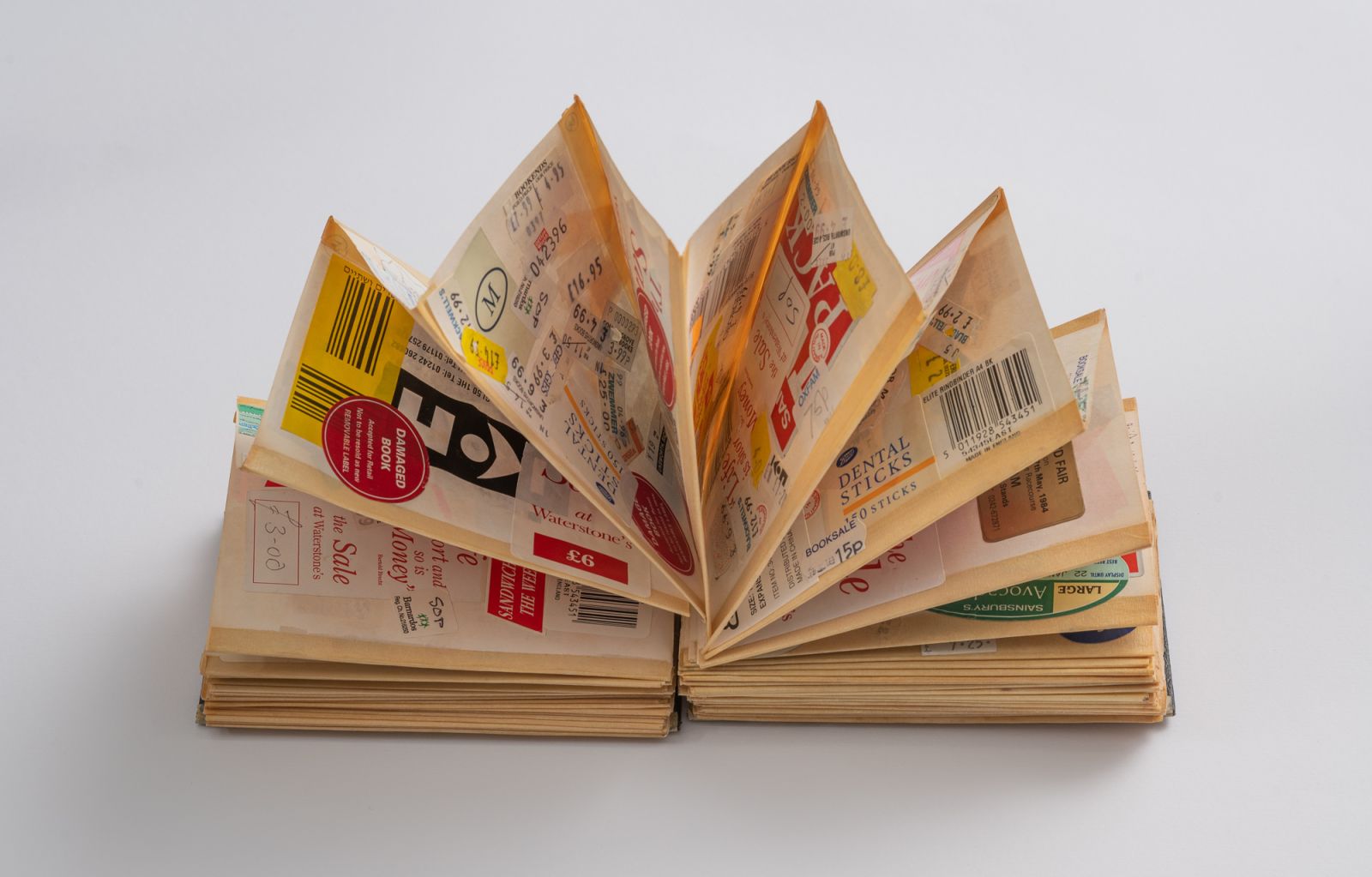
Collage of price stickers on products, drawings and logos pasted in concertina format.
There are many answers to your questions... The format of the unique (one-off) artist's book (as opposed to the sketch-book), is for me, at this point, a laboratory, a mental space, a studio inside a studio. An ideal space for experimenting with different visual idioms, before reaching any formal conclusion (which only then will take the form of an edition).
I need to emphasize there something that is important to me – the abolition of one recognizable style. This implies a diversity of styles and activities, a diversity which exists inside me, i.e. - not one artist, but many, not one medium, but many, not one voice, but many, not one technique, but many, not working towards one “masterpiece,” but a process of collecting, gathering, amassing. The form of the books is a good vehicle for experimenting with all kinds of visual poetic forms. Exploring them through storing, categorizing, cataloging, classifying, arranging and re-arranging, “albumising” etc.
As you can see, I am interested in the quality of accumulation, of representing a group of things (more about that later)… If you are able to display a group of few books under a glass cabinet or vitrine, where every page of every book is completely different from its neighbor, this maybe will help to demonstrate the feeling of variety and diversity, this feeling of “conglomeration” - either in collage, drawing, mixed-media, writing, text, ready-made, or concept.
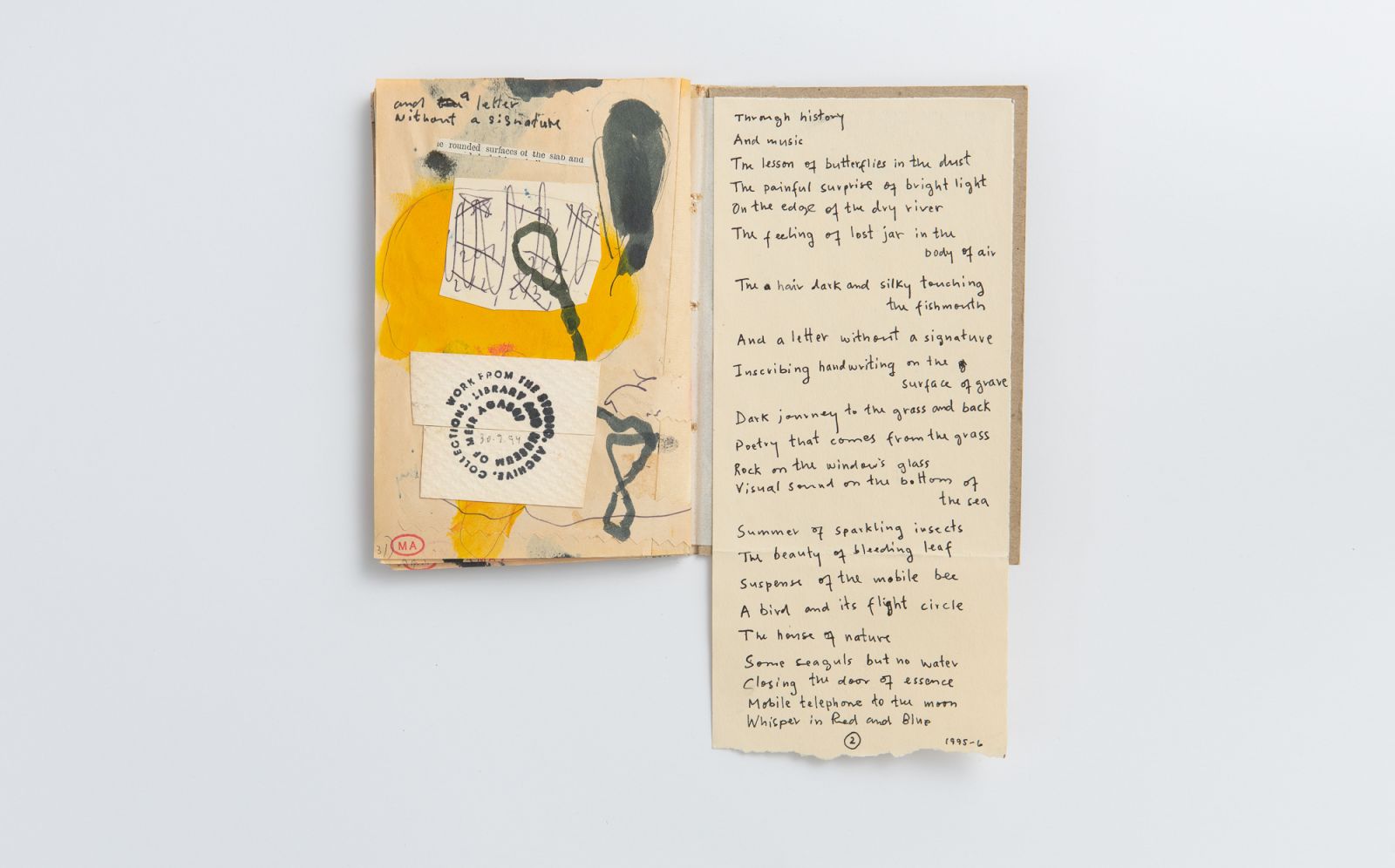
My feeling is that every book is different and pushing – more or less – towards an unknown and different direction… The form of Artist's Book is a form of open changes on the one hand, control, and design on the other. Between these two factions usually lies the conspiracy to be one, or all of the things below:
A Studio
An Archive
A Museum
Gallery Walls
An Exhibition in a space for browsing and leafing through
An Object for Collaboration with a Pair of Hands
A Safe for Keeping “Secrets”
A Storehouse for Ideas
A Log of Notes
A Work-Diary
An Image-Diary
A Diary of Dreams
A Chest of Drawers
A Portfolio of a Narrative without a Story
A Space for Occupational Therapy
A Book of Visual Poetry
A Book of Visual Text
A Notebook
A Codex of Hidden Desires
A Comic
A Place
Artists' books are usually easy to carry around, and therefore are good collaborators for nomadic / traveling / transitional wandering, either mental or physical; from one form to another, from one geography to another, from one mental space to another, from one mood to another and so on. In a shamanistic sense – a device a fetish to “contain” and trap a spirit-space unaccountable and unmanageable outside itself.
I like the idea that I can amuse or disappoint myself without being distracted by the desire, or the need, to create this eternal monster we call “a masterpiece”; or to obey the autocratic need for “a statement.” I do not agree that this implies by its nature, an anecdotal ease and lack of the tension and density that we usually associate with a painting or a sculpture. I think that by its nature – an order, a combination, and a mixture of a form and idea, dealing with a group of images, a sequence with a rhythm of continuity – an artist's book, like any other form of art, can acquire a magical and unique poetic space.
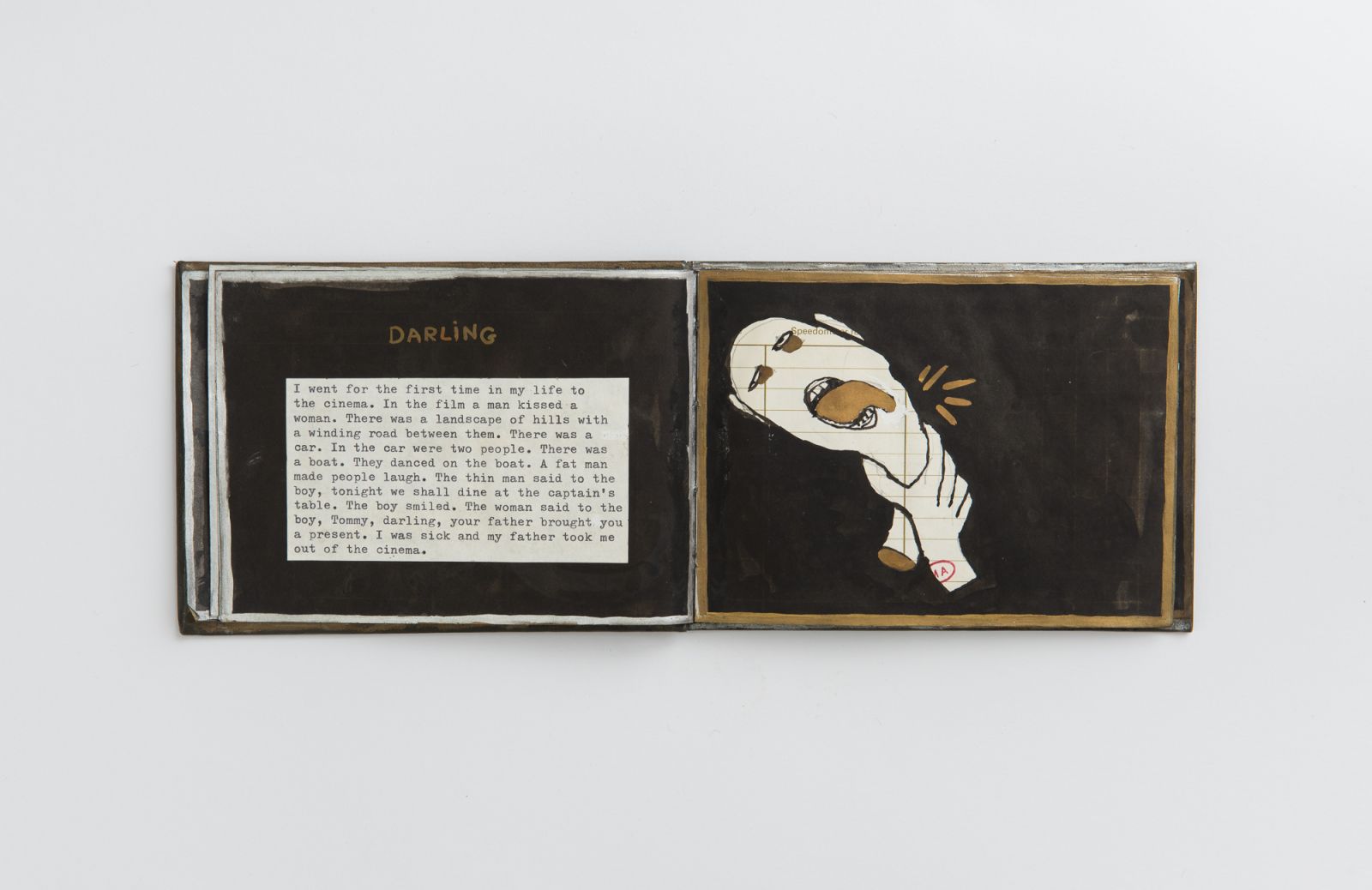
Black marker, typewritten story, collage, paperback, 11x15 cm.
These ideas of “dealing with a group of images,” or “sequence with a rhythm” appeal to me very much, because they reflect my growing interest in making pieces which are constructed and reconstructed from many components. As I have pointed out, because of my personal experience, I do not wish to create a “masterpiece” or a big statement. And not only because it is a goal that seems completely unreal to me, beyond my reach, talent, and ambitions, and not even because I see it as an irrelevant goal for our times.
The main reason lies with my own temperament and interest. It just suits me as a writer and image maker, and “archivist” and a “Librarian,” a “collector” and a “curator,” to play these cross-referencing games through the form of artists' books and editions.
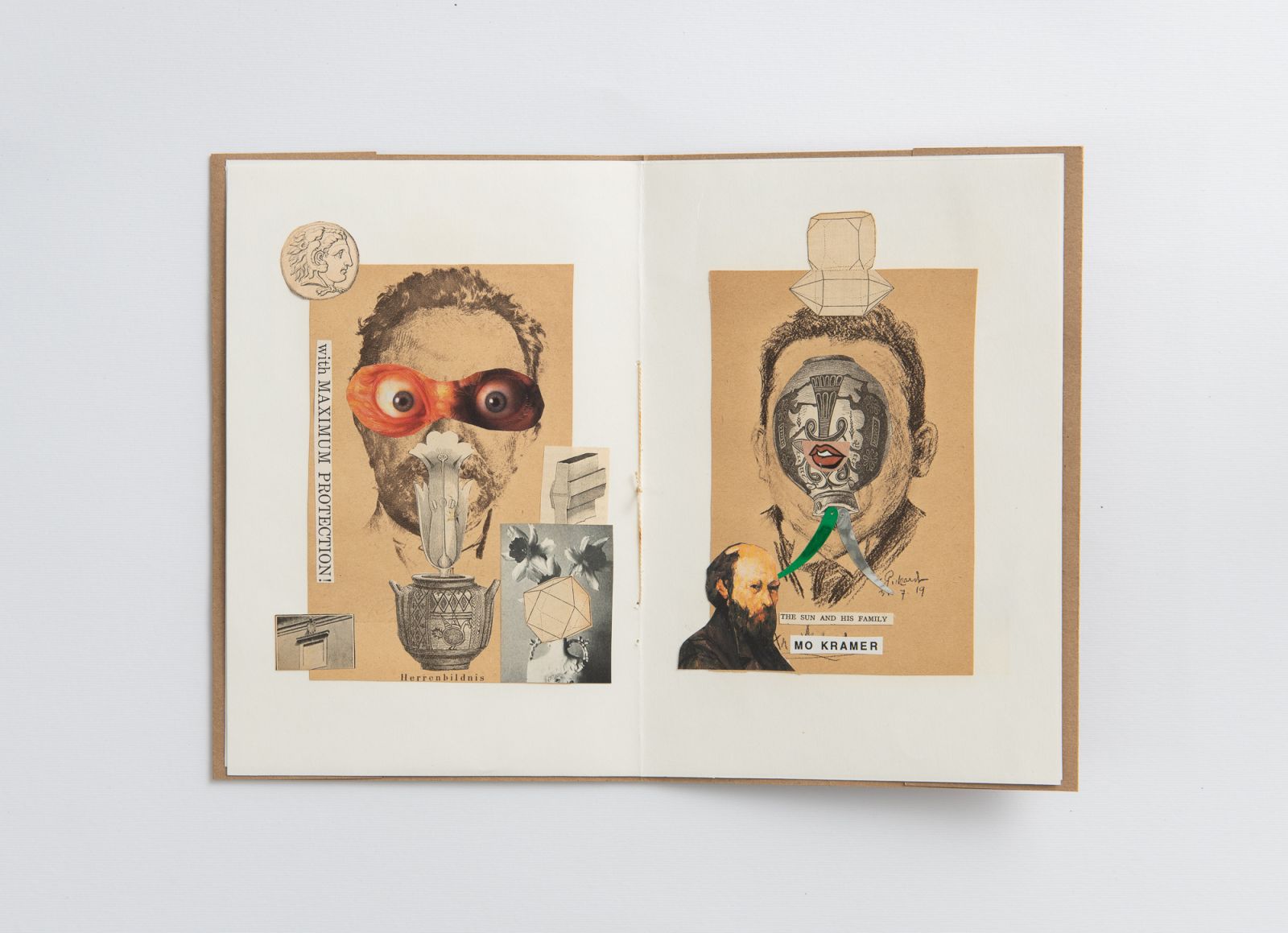
Collages from magazines and books, drawing, 21x14 cm.

Concertina, cardboard, photos from magazines, fountain pen, 11.5X12.5 cm.
An artist's book is (usually) a modest way to avoid that aura of “expression of importance.” I see it as the most modest form of installation I can think of and, together with traditional drawing, maybe the most intimate of all art forms, only parallel to the form of a diary... Because of my circumstances, I sometimes find it to be the most practical format for me. It does not demand a big space, only a desk, glue, masking tape, sellotape, scissors, a knife, a ruler, a ready-made book or a notebook, some pencils, ink, colors, left-overs of magazines and paper, unwanted bol books, etc., etc.
Looking at some of these books, I begin to recognize – for good and bad – that as well as their autonomic history, they also reflect the anarchic history of work and thought from the studio, archive, collections, library, and museum of Meir Agassi.
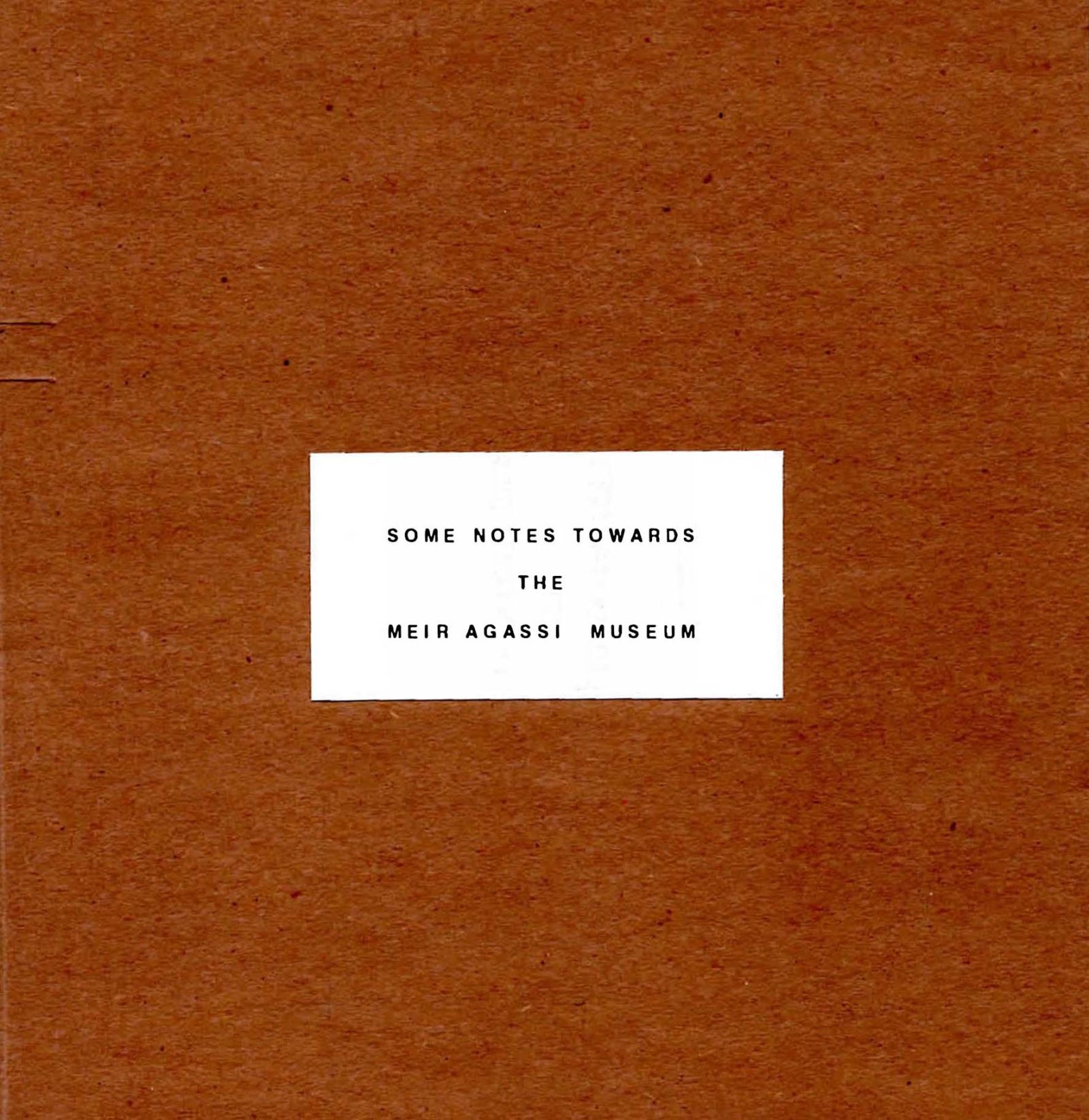
Courtesy of Yaniv Shapira and The Mishkan Museum of Art, Ein Harod.
Our deepest thanks to curator Yaniv Shapira for bringing the letter to the magazine, and to Nelly Agassi, Galia Bar-Or, Orit Segev, and the team of the Mishkan Museum of Art, Ein Harod for making Agassi's books accessible on Madaf.
Meir Agassi (1947 – February 1998) was a writer, painter, translator, journalist and art critic. In the years 1963-1965 he studied art at the Avni Institute. In 1970 he presented "Drawings" at the "Bar-Kochva" gallery in Tel Aviv. In 1980 he won a scholarship to study in England. In 1982 he settled in Bristol, UK. His first book "The Black Hills of Dakota", sad and bitter memories of a kibbutz native, was printed in 1987. His book of poems "Clouds Sculpted Shapes" was printed in 1969. He was the deputy editor of the Israeli monthly Magazine Monitin, where he worked alongside Adam Baruch and Rino Zror. He also wrote several hymns, and many critical articles on art in the magazine "Studio" and the newspaper "News". In 1988 he wrote an entire issue of the magazine Studio under the title "Hotel Utopia-Dystopia" on the subject of "outsider" artists. In February 1998 Agassi was killed in a car accident on the road between Bristol and Oxford. His wife, Tessa, and their son Daniel were killed with him. After his death, many paintings and drawings as well as many diaries were discovered in his estate. All of these were presented in a comprehensive exhibition in 2002, which was shown in several places in Israel and was donated to the Haim Atar Art Center in Ein-Harod. A large exhibition in his memory was curated by Yaniv Shapira at the Mishkan Museum of Art, Ein Harod, and parts of it, including Agassi's work area, are permanently displayed in the Mishkan's library. The exhibition 'Window to a Dream about Beauty' opened on March 2024, displaying a chronological survey of the chapters in Agassi’s oeuvre, from the mid-1970s to his announcement of the Meir Agassi Museum in 1992.




